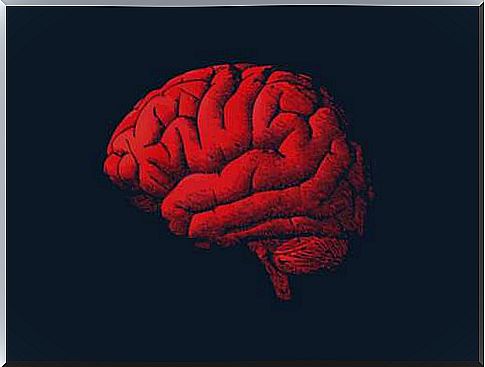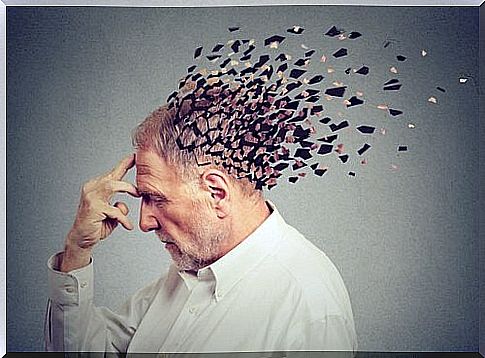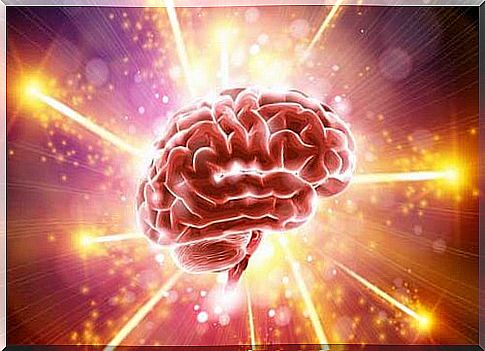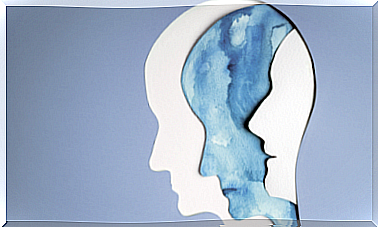The Brain Ages, And The Reason Lies In Your Genes

The brain ages just like any other structure and system in the body. But there are people who seem to be worse affected by the ravages of time than others. We are not just talking about physical change; Some people’s abilities also change with age.
Why is this happening and what can be done about it? Are some people just more likely to show more signs of aging? Are there tools that help us slow down as the brain ages?
The answer to this mystery lies in certain genes. A group of researchers at the Babraham Institute in Cambridge (UK) and Sapienza University in Italy found the answers buried in the brain’s genetic processes. These genes influence complex mechanisms of the cognitive impairment associated with age.
We already know a lot about what happens when the brain ages. We know, for example, that nerve cells deteriorate and die and are then replaced by new ones. One type of stem cell, neural stem cells to be more specific, enables this process. These are nervous system cells that can regenerate and create mother cells.
Over time , however, these cells begin to function worse and worse. As a result, the brain also begins to function less well. But what causes these cells to age? What molecular changes cause the deterioration? These are questions that the researchers have managed to answer.
Before we take a look at how the brain ages, we will talk about what it consists of. Brain aging is to some extent inevitable. But it does not always look the same. Aging affects all brains differently. However, preventing the brain from aging would be the best way to achieve eternal youth.

The human brain contains around 100 billion nerve cells. They are interconnected by trillions of synapses. During life, the brain changes more than any other part of the body. From the moment the brain begins to develop during the third week of pregnancy until old age, its complex structures and functions will continuously change.
The maturity of the brain
During the first years of life, a child’s brain creates more than one million new nerve connections per second. The size of the brain quadruples during the preschool years. Around the age of six, the brain reaches around 90% of its full adult size.
The frontal lobes, which are areas of the brain responsible for things like planning, operational memory and impulse control, are among the last areas of the brain to mature. In fact, it is possible that they will not be fully developed until the age of 35.
However, when they reach this point , they begin to age. As you age, your body’s system gradually begins to deteriorate. The brain is no exception. Therefore, normal aging therefore causes some changes in memory.
Normal aging causes the following common effects on memory.
- Difficulty learning new things: it may take longer to memorize new information.
- Simultaneous ability may be impaired. Slow processing makes it difficult to handle and plan parallel tasks.
- Remembering names and numbers is becoming increasingly difficult. The strategic memory that helps you memorize names and numbers begins to deteriorate already at the age of 20.
- It becomes more difficult to remember meetings.
Memory problems in seniors
Some studies indicate that one third of all pensioners have problems with declarative memory (memories of facts or events). Other studies indicate that one-fifth of people in their 70s perform as well in cognitive tests as 20-year-olds.
The general changes that happily affect one include:
- Brain mass: The frontal lobe and hippocampus are the areas of the brain that are involved in higher brain function and codification of memories. These changes begin in the 60s and 70s.
- Cortical density: the external surface of the “groove” becomes thinner due to the reduction of synaptic connections. Fewer connections means slower cognitive processing.
- White mass: the white mass consists of myelinated nerve fibers that clump together and transmit nerve signals among the nerve cells. Researchers believe that myelin decreases with age. As a result, it slows down processing and affects cognitive function.
- Signaling system: researchers suggest that the brain produces fewer chemical messengers with age. This reduction in dopamine, acetylcholine, serotonin and norepinephrine may play a role in memory loss. It can also contribute to increased depression.
Now that we know what happens when the brain ages, we will go back to the study we mentioned at the beginning. According to researchers, the DBX2 gene may explain the aging of the brain.
They compared the genetic changes in stem cells / progenitor cells (neural stem cells abbreviated NSC) in 18-month-old rats and 3-month-old rats. They identified more than 250 genes that changed their behavior over time. This means that these genes probably cause malfunction of the indicated cells.
Once they identified these 250 genes , the researchers noticed that an increase in the DBX2 gene seemed to alter the aged NSC. They performed tests in vivo and in vitro. These tests showed that an increase in this gene in young NCS caused them to act as old stem cells. The increase in DBX2 actively prevented NSCs from growing or spreading like young cells.

In addition, they looked at the oldest NSCs. There , they identified changes in the epigenetic markers that may explain why stem cells deteriorate over time. If we think of our DNA as an alphabet, the epigenetic markers are accents and commas. They tell the cells if and how to read genes.
In this study, researchers discovered how these markers positioned themselves in different ways in the genome, where they “told” the NSCs to grow more slowly.
This study showed that these changes can contribute to brain aging. They do this by slowing down the brain’s renewal process. Researchers hope that these findings may one day lead to a reversal of the aging process. By understanding the aging of the brain, at least in mice, researchers hope to identify ways to detect a clinical deterioration in neural stem cells.








